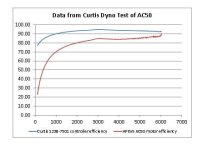motomoto
1 kW
- Joined
- Jun 28, 2010
- Messages
- 458
Ok, these are the three categories:
1. For most under powered wimpy assed airplane motor powered misappropriated misconceptions,
the lightweight 9-speed might be appropriate for the cause.
2. If the motor has enough power for the situation, but doesn't have the breadth of powerband appropriate, then a 2 speed
perhaps might be deemed appropriate.
3. If the funding warrants designing the power and breadth into a motor that needs no gear changes, that could be considered
the ultimate choice.
P.S. I think both sides are right. It all depends on how much time, thought, resources, deniro, etc. are available to devote to a
project, as to which choice is best.
1. For most under powered wimpy assed airplane motor powered misappropriated misconceptions,
the lightweight 9-speed might be appropriate for the cause.
2. If the motor has enough power for the situation, but doesn't have the breadth of powerband appropriate, then a 2 speed
perhaps might be deemed appropriate.
3. If the funding warrants designing the power and breadth into a motor that needs no gear changes, that could be considered
the ultimate choice.
P.S. I think both sides are right. It all depends on how much time, thought, resources, deniro, etc. are available to devote to a
project, as to which choice is best.





